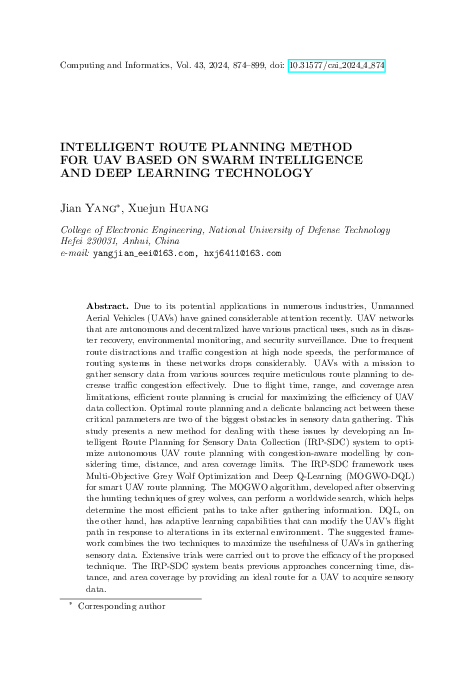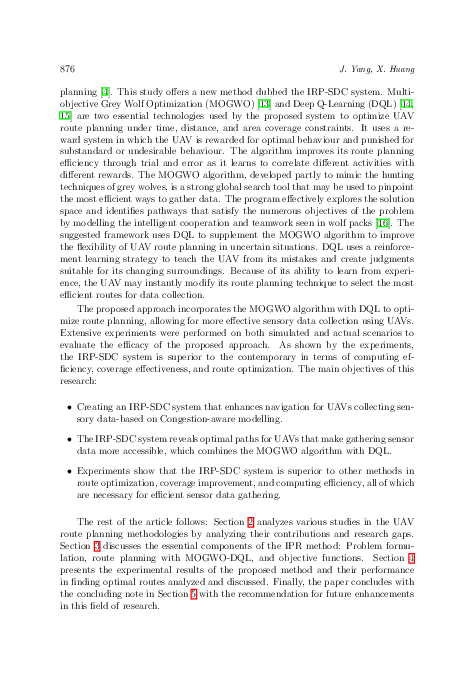Intelligent Route Planning Method for UAV Based on Swarm Intelligence and Deep Learning Technology
keywords: Autonomous UAVs, intelligent route planning, sensory data, swarm intelligence, Deep-Q-Learning, multi-objective grey wolf optimization, congestion-aware modeling
Due to its potential applications in numerous industries, Unmanned Aerial Vehicles (UAVs) have gained considerable attention recently. UAV networks that are autonomous and decentralized have various practical uses, such as in disaster recovery, environmental monitoring, and security surveillance. Due to frequent route distractions and traffic congestion at high node speeds, the performance of routing systems in these networks drops considerably. UAVs with a mission to gather sensory data from various sources require meticulous route planning to decrease traffic congestion effectively. Due to flight time, range, and coverage area limitations, efficient route planning is crucial for maximizing the efficiency of UAV data collection. Optimal route planning and a delicate balancing act between these critical parameters are two of the biggest obstacles in sensory data gathering. This study presents a new method for dealing with these issues by developing an Intelligent Route Planning for Sensory Data Collection (IRP-SDC) system to optimize autonomous UAV route planning with congestion-aware modelling by considering time, distance, and area coverage limits. The IRP-SDC framework uses Multi-Objective Grey Wolf Optimization and Deep Q-Learning (MOGWO-DQL) for smart UAV route planning. The MOGWO algorithm, developed after observing the hunting techniques of grey wolves, can perform a worldwide search, which helps determine the most efficient paths to take after gathering information. DQL, on the other hand, has adaptive learning capabilities that can modify the UAV's flight path in response to alterations in its external environment. The suggested framework combines the two techniques to maximize the usefulness of UAVs in gathering sensory data. Extensive trials were carried out to prove the efficacy of the proposed technique. The IRP-SDC system beats previous approaches concerning time, distance, and area coverage by providing an ideal route for a UAV to acquire sensory data.
reference: Vol. 43, 2024, No. 4, pp. 874–899


